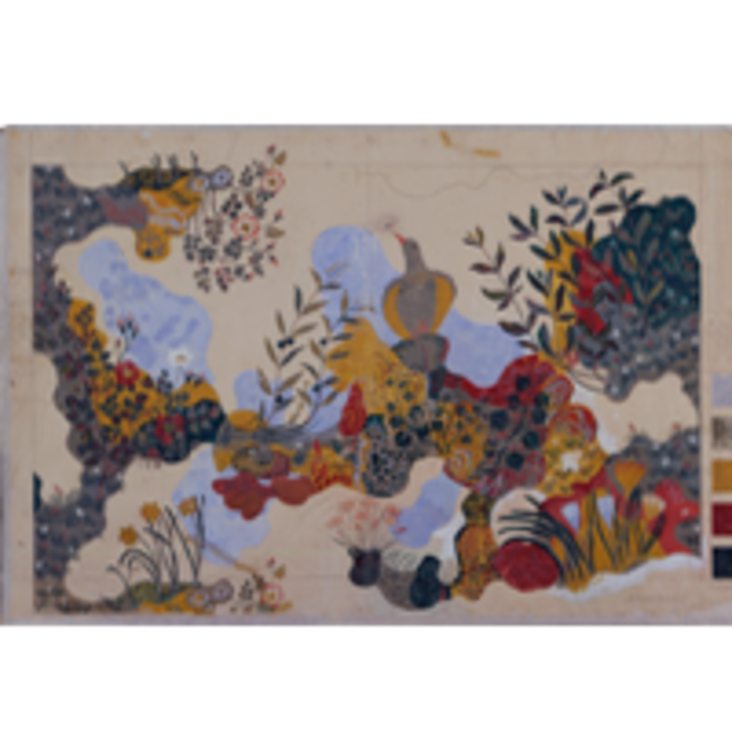Basile Baudez will deliver a Françoise and Georges Selz Lecture on Eighteenth- and
Nineteenth-Century French Decorative Arts and Culture on
Tuesday, October 3, at 6 pm. His talk is entitled “Inessential Colors: A History of Color in Architectural Drawings, 16th–19th Centuries.”
Architectural historians have focused on the history of drawing primarily as a project design tool. By applying the methods of art history, this talk traces color as a key player in the long history of rivalry and exchange between European traditions in architectural drawing and practice. While Italian Renaissance drawings were largely monochrome and developed their conventions under pressure from engravers, seventeenth-century European drawings are characterized by a contrast between a colorful German and Dutch world—developed around architect-painters’ designs that influenced French and Spanish draughtsmanship—and a still largely monochrome tradition in Italy and England. At the end of Louis XIV’s reign, French architects adopted color conventions taken from engineers, largely for informational purposes. In the middle of the eighteenth century, however, a color revolution took place, one in which a new generation of architects who were working alongside painters developed a wide chromatic range that was no longer limited to informing the worker but to persuading academic juries and gaining commissions. This eighteenth-century French employment of color laid the foundation for Beaux-Arts architectural drawings in the first half of the nineteenth century, at a moment when English architectural drawings also adopted color in response to the English watercolor movement.
Since 2007, Basile Baudez has been Maître de Conférences in heritage studies and architectural history at Université Paris-Sorbonne, Paris IV. For the 2015–2016 year he was a Visiting Scholar in the History of Art Department at the University of Pennsylvania. His research has been supported by fellowships from CASVA at the National Gallery of Art and the Getty Research Institute. He received his PhD from the École Pratique des Hautes Études in 2006 and published his dissertation at the Presses Universitaires de Rennes under the title Architecture et tradition académique au siècle des Lumières. His main areas of research are the history of architectural schools and the Beaux-Arts system as well as the history of architectural representation in the Western world. He co-edited a monograph on Les Hôtels de la Guerre et des Affaires étrangères à Versailles (Paris: Chaudun, 2010) and a volume Chalgrin et son temps: architectes et architecture de d’Ancien Régime à la Révolution (Bordeaux: William Blake & co., 2016). He has published extensively, including in La Revue de l’Art, Metropolitan Museum Journal, Journal of Art Historiography, Bulletin Monumental, The Burlington Magazine, and Livraisons d’Histoire de l’Architecture. He curated the exhibition À la Source de l’Antique (2011) at the École des Beaux-Arts, devoted to Italian, Russian, and French neoclassical architectural drawings, and he co-curated, with Nicholas Olsberg, the exhibition Civic Utopia, France 1765–1837 (2016-2017) at the Courtauld Institute of Art. His current book project addresses the history of color in architectural representation from the Renaissance to the nineteenth century.







